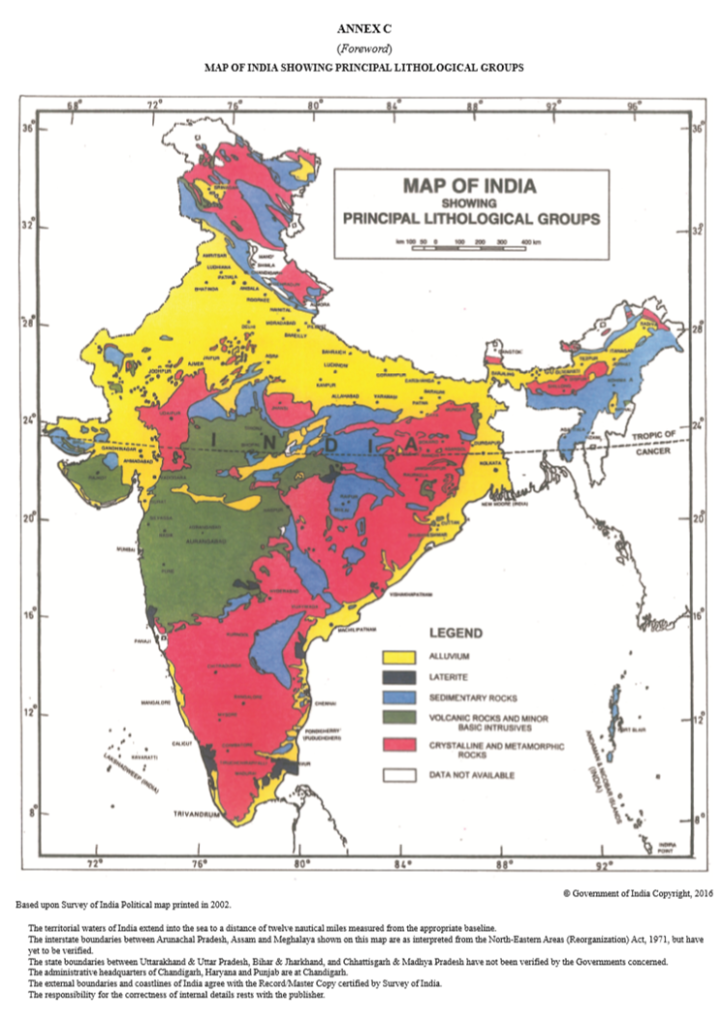In this article, we share the important clause and criteria of soil bearing capacity (SBC) and other geotechnical factor for seismic design of building as per IS 1893: Part-I.
So please read the article till the end, and if you get any useful information from this than please share with your friends.
Table of Contents
Consideration of Geo-technical Factors in Seismic Design of Building
The soil related factors such as its bearing capacity and types of soil is very important aspect for design of any kind of structure. Its play very important role in design of RCC Structure.
For building the Foundation is very important for its stability and durability, and SBC of soil and its types is very important for design of foundation in gravity load cases.
Also, Importance of geotechnical factors in earthquake load is same but for earthquake load cases, Indian standards allow some exemption in that factors such as increase in bearing capacity, etc. to control the design and cost of the structure.
Also, this standard provides classification of soil based on its SPT Value that is also beneficial for us. Let’s understand the every geotechnical aspects based on IS 1893 : Part-1.
Also Read: Ductile Detailing of Column as per IS 13920-2016
Increase in Net Safe Bearing Capacity (SBC) on soil in design of foundation
- When earthquake forces are included, Net safe bearing pressure of soil can be increased as per given table below depending on type of foundation and type of soil.
| Soil Types | Percentage Increase Allowable |
|---|---|
| Type A: Rock or Hard soil | 50% |
| Type B: Medium or Stiff soil | 25% |
| Type C: Soft soil | 0% |
Note: If any increase in net bearing pressure has already been permitted for force other than seismic force, the increase in allowable bearing pressure, when seismic force is also included, shall not exceed the limits specified above.
- In soft soil, no increase shall be applied in bearing pressure, because settlements cannot be restricted by increasing bearing pressure.
Also Read: Concrete Design Load Combinations as per ASCE-7 & ACI-318
Minimum SPT ‘N’ Value for Foundation
- In soil deposits consisting of submerged loose sands and soils falling under classification SP (Poorly Graded Sand) with corrected SPT Value N, less than 15 in seismic zones III, IV, and V, and less than 10 in seismic zone II, the shaking caused by earthquake ground motion may cause liquefaction or excessive total and differential settlements. Such sites avoided for locating structures of important projects. Otherwise, settlements need to be investigated, and appropriate methods adopted of compaction or stabilization to achieve N Value indicate as in given table below.

Note: If soils of lower N Values are encountered than those specified in the table above, then suitable ground improvements techniques shall be adopted to achieve these values.
- Alternatively, Deep pile foundation should be used, which are anchored in stronger strata, underlying the soil layers that do not meet the requirement.
- Marine clay layers and other sensitive clay layers are known to liquefy, undergo excessive settlements or even collapse, owing to low shear strength of the said soil; such soils will need special treatment according to site condition.
Also Read: What is Geosynthetic | Types of Geosynthetics
Classification of Types of soils
Based on IS 1893 Part-1 : 2016, the classification of soil as per their SPT value is given below.

Type A : Rock or Hard Soils
- Well graded gravel (GW) or well graded sand (SW) both with less than 5% passing from 75mm sieve.
- Mixtures of well graded san and gravel
- Poorly graded sand (SP) or Clayey sand (SC), all having N above 30
- Stiff to hard clays having N above 30, where N is corrected standard penetration test value.
Type B : Medium or Stiff Soils
- Poorly graded sand or poorly graded sands with gravel (SP) with little or no fines having N between 10 and 30
- Stiff to medium stiff fine grained soils, like silts of low compressibility (ML) or clays of low compressibility (CL) having N between 10 and 30.
Type C : Soft Soils
All soft soil other than SP with N<10. The various possible soils are:
- Silts of intermediate compressibility (MI)
- Silts of high compressibility (MH)
- Clays of Intermediate compressibility (CI)
- Clays of High compressibility (CH)
- Silts and clays of intermediate to high compressibility (MI-MH or CI-CH)
- Silt with clay of intermediate compressibility (MI-CH)
- Silt with clay of high compressibility (MH-CH)
Type D : Unstable collapsible, liquefiable soils
In this category, requires site-specific study and special treatment according to site condition.
Reference: IS 1893 (Part-1) : 2016 – Criteria for Earthquake Resistant Design of Structures
Also Read: Ductile Detailing of Beam as per IS 13920-2016
Geotechnical Factors Consideration in IS 1893 Part-1 (2016) | Techio Civil
In this video, we try to explain the criteria of various geotechnical aspects as er IS 1893 Part-1 : 2016 that is necessary to understand before going to analyze and design any earthquake resistance structure. So keep watch the video till the end and if you get any valuable information from this video than please share it with your friends. 1) Load Combination as per IS 1893 Part-1 : 2016 :- https://youtu.be/Pb1Ce_E4nXA 2) Terminology related to seismic design :- https://youtu.be/YT8_AazDGNg Read Article : https://www.civilengineeringweb.com/2023/03/criteria-for-sbc-types-of-soil-as-per-is1893.html Social network Instagram: https://www.instagram.com/techiocivil7 Learn More about civil engineering on my website. https://www.civilengineeringweb.com Learn Civil engineering in hindi at: https://www.hindicivil.in Please contact us for copyright matters at techiocivil7@gmail.com Please don’t forget to Like, Share, And Subscribe to our techio civil channel for more videos.
I am a Professional Civil & Structural Engineer having more than 4 years of experience in Engineering, Procurement and Construction industry. Here i sharing the latest updates of EPC Projects and Construction News.

